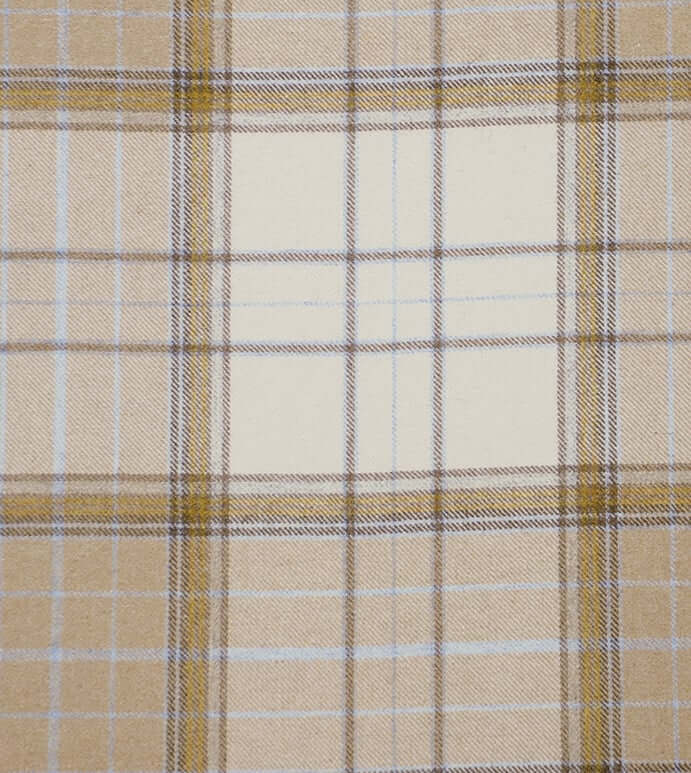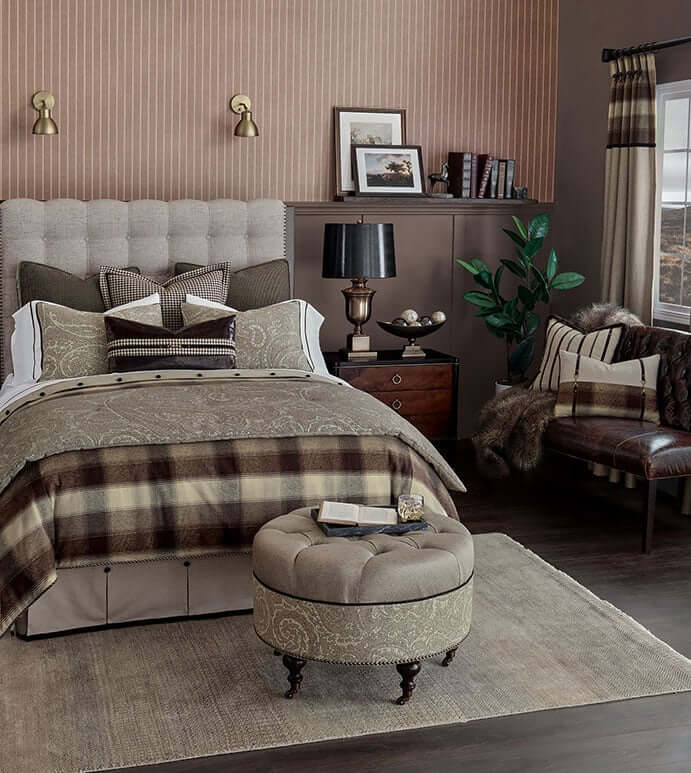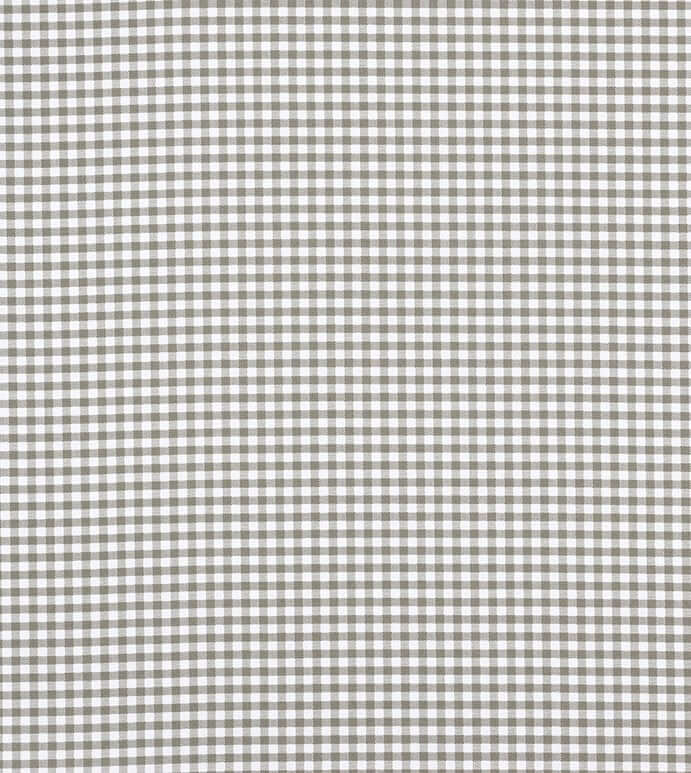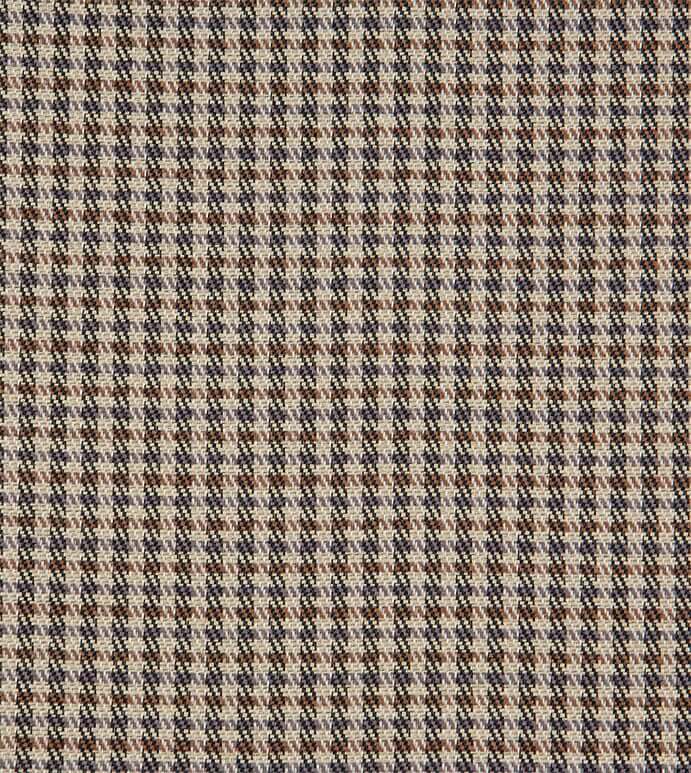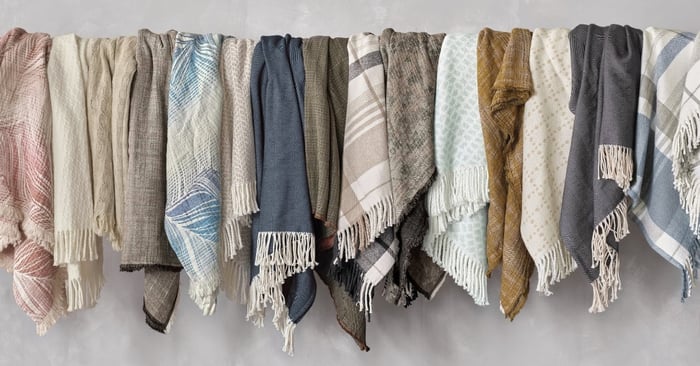Table of Contents
If you stopped by our showroom at High Point this fall, you probably saw our newest debut, the Highland luxury bedding collection. Sophisticated and masculine, Highland is full of rich textures and tailored details. In Highland, and across many of our gentlemanly collections, you’ll see classic patterns like houndstooth, plaid, or checkers. Rich, dark, and traditional, these looks instantly feel cozy and timeless—perfect for the colder seasons.
Houndstooth, checkers, and plaid—while in the same family—are all distinct looks, each with their own characteristics. Here, we’re breaking down the difference between these lovable patterns that define this time of year.
What is Plaid?
This is one of the most classic and recognizable patterns, whether it's donning a hand-me-down flannel, a Ralph Lauren coat, or a warm duvet. Plaid patterns feature plenty of parallel lines, both vertical and horizontal. These lines run the length of the fabric, intersecting at right angles to form the signature grid.
As opposed to checkers, this traditional pattern allows for a little more freedom, often with wider or longer repeats. Therefore, a wider array of shapes are formed. Versatile and classic, you’ll find this pattern featured in many of our more masculine, tailored collections such as Arthur, or of course, Highland. Often utilizing deep and rich colors, this look makes for stylish, warm lodgings. These classic details are perfect for a fall/winter look.
What are Checkers?
Similarly, checkered patterns feature intersecting parallel lines, running both vertically and horizontally. What distinguishes a checkered pattern from a traditional plaid, though, is the lines’ proximity and repeat. Often with checkered patterns, you’ll see close running lines that create a smaller, precise boxed pattern, resembling a chessboard.
Gingham, for example, is a type of checkered pattern. Where a traditional plaid creates a grid look, checkered patterns form perfect boxes. In other words, checkered patterns are a simpler, more uniformed type of plaid. Often you’ll see checkered patterns incorporating white, or another neutral to define the pattern’s contrast. Explore checkered patterns with our Malaya collection. See this classic and clean pattern styled in a variety of colors.
What is Houndstooth?
Now widely popularized in fashion and decor, houndstooth fabrics were originally common among Scottish shepherds. Though it may look similar from a distance, houndstooth’s distinct pattern makes it different from a standard checkered pattern.
Houndstooth is a pointed check effect produced by a two-up, two-down broken twill with four ends and four picks in a repeat. This staple got its name from its jagged pattern’s resemblance to– quite literally– a hound’s tooth. The unique pattern’s repeat creates an abstract checkered-style look, often defined by the use of contrasting colors.
With its Scottish ties and sophisticated charm, it was only fitting that we used this lovable pattern in Highland. Explore a traditional brown and neutral houndstooth in Highland's euro shams and decorative pillows.
Chanel the warm and charming atmosphere of the season by bundling up with these classic looks. Browse through our wide range of fabrics by pattern to see these timeless and stylish patterns in action.
FAQs
Where can I find more collections with these patterns?
Filter through our collections online by style or color. Filter specific products like bedding and pillows by pattern or color. Feel free to contact our customer service team with any questions.
What makes checkers different from plaid?
Checkered and plaid patterns both feature intersecting horizontal and vertical lines. Plaid is an umbrella term for a lined, grid-style pattern. Checkered patterns are a more uniformed kind of plaid, forming perfectly sized boxes.

